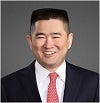Navigating Patent Inventorship Disputes: Humans and Generative AI
The Federal Circuit found that an AI software system cannot be an “inventor” on a US patent. But here are three possible scenarios to consider when a human uses AI during the inventive process.

In Thaler v. Vidal, the Federal Circuit found that an artificial intelligence software system cannot be an “inventor” on a US patent. The court reasoned that patents can only be granted to individuals and that the term “individual” refers to a human being. The court flagged an issue of perhaps even greater interest for the future: “[W]e are not confronted today with the question of whether inventions made by human beings with the assistance of AI are eligible for patent protection.”
Humans are already using generative AI to assist with complicated tasks traditionally performed by humans, such as writing software code, that sometimes yielded patentable inventions in the past. The next issue involving inventorship likely will revolve around a human using AI to generate an output that becomes the subject of a patent application where the human claims to be the sole inventor.
The current standards on inventorship impliedly assume that any legitimate invention in a patent application was the result of efforts by at least one human. It is assumed that if the claims are novel and non-obvious and the other statutory requirements are fulfilled, then the named inventor(s) did in fact make an inventive contribution because the invention could not have arisen from any other source.
Generative AI blows apart this assumption. A sole inventor who used AI in creating the invention can now present claims that are novel and non-obvious due to the work performed by AI with minimal assistance from the inventor. One possible way to gauge the efforts of the sole inventor and whether that person’s contributions are worthy of a patent would be to applying the current standard for joint inventorship to this situation where AI is considered to have made an “inventive” contribution (even though Thaler says AI cannot be an inventor) and to then consider whether the human’s contribution would warrant joint inventor status if the work that had been performed by AI had instead been performed by another human. The inquiry would then focus on whether the human’s contribution satisfies this standard.
If this standard or a similar one is applied, then there are three possible scenarios to consider when a human uses AI during the inventive process:
Scenario 1: The human’s contribution falls short of inventive contribution under the current joint inventorship standard.
In this scenario, no patent would be granted. The only true “inventor” was the AI software, but Thaler has already held that AI cannot be an inventor. The relative contributions of the human and AI can be explored in litigation down the road. The US Patent and Trademark Office (PTO) at the moment is not armed with information by which it can decide if a human contributed to the invention, other than relying on the ethics of the inventor to seek a patent only when the inventor truly made an inventive contribution. There is a great potential for mischief.
Scenario 2: The human’s contribution constitutes inventive contribution, but the AI software’s contribution would have fallen short of being an inventive contribution if that same contribution had been made by a human being.
In this scenario, a patent would be granted. This situation is not any different than the scenario where one human conceives of the invention and a second human implements the invention in a way that any person of ordinary skill in the art could have done.
Scenario 3: The human’s contribution constitutes inventive contribution, but the AI software’s contribution also would have satisfied the inventive contribution standard if that same contribution had been made by a human being.
In this scenario, if the AI’s contribution was instead provided by a human, it would be a missing inventor. Yet, Thaler says that AI cannot be an inventor, so in this scenario, there is no missing “inventor.” This raises an interesting issue of first impression of whether a human could obtain a patent if he or she only conceived of part of the invention. This will need to be resolved in future court decisions.
The relative contributions of a human and AI could be left to be sorted out down the road in litigation. Or the PTO could implement new procedures to enable examiners and the public to have immediate insight into the contributions of each, such as the following.
The PTO could require applicants to label any drawings that were generated by an AI engine as “Generated by AI,” similar to the existing labeling requirement for “Prior Art.”
The PTO could amend the inventor declaration to require an additional assertion by each inventor: The claims presented in the application (Check One) ____ recite ____ do not recite subject matter that was generated or conceived at least in part by AI software.
The Manual of Patent Examining Procedure (MPEP) could be amended to include instructions to the examiner to inquire about the exact contribution of the inventor and AI software in the instances where the inventor declaration indicates the use of AI. For example, the examiner could be instructed to ask the inventor for a written response indicating the queries that the inventor made to the AI software. The legal import of this inquiry will depend upon any changes to the law as to inventorship, but arming examiners with tools to unearth facts will be helpful under any standard that is ultimately adopted, and at the very least, it will provide the public with the inventor’s recollection of the conception process that will surely fade from memory by the time the patent is litigated.
About the Author
You May Also Like






